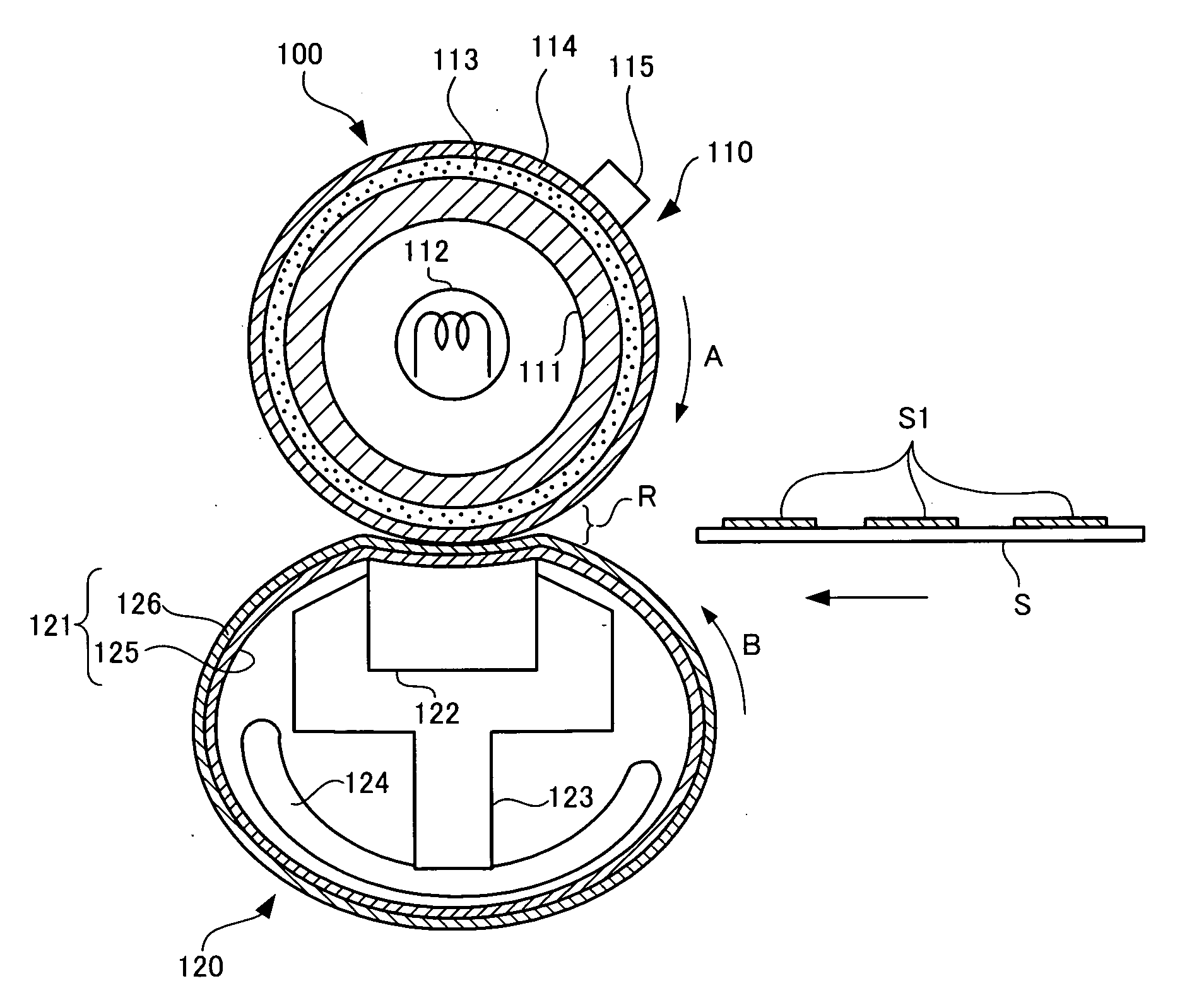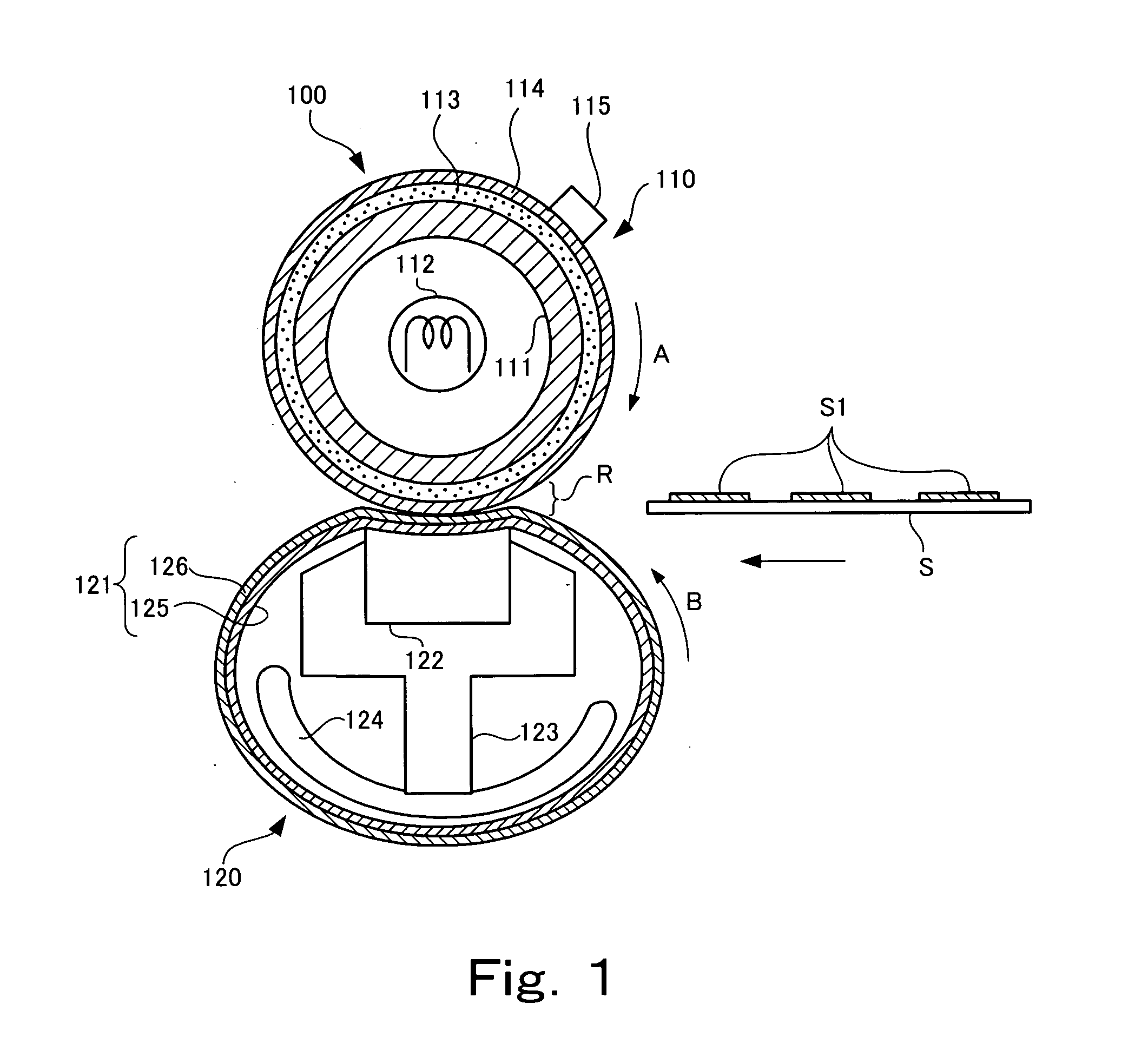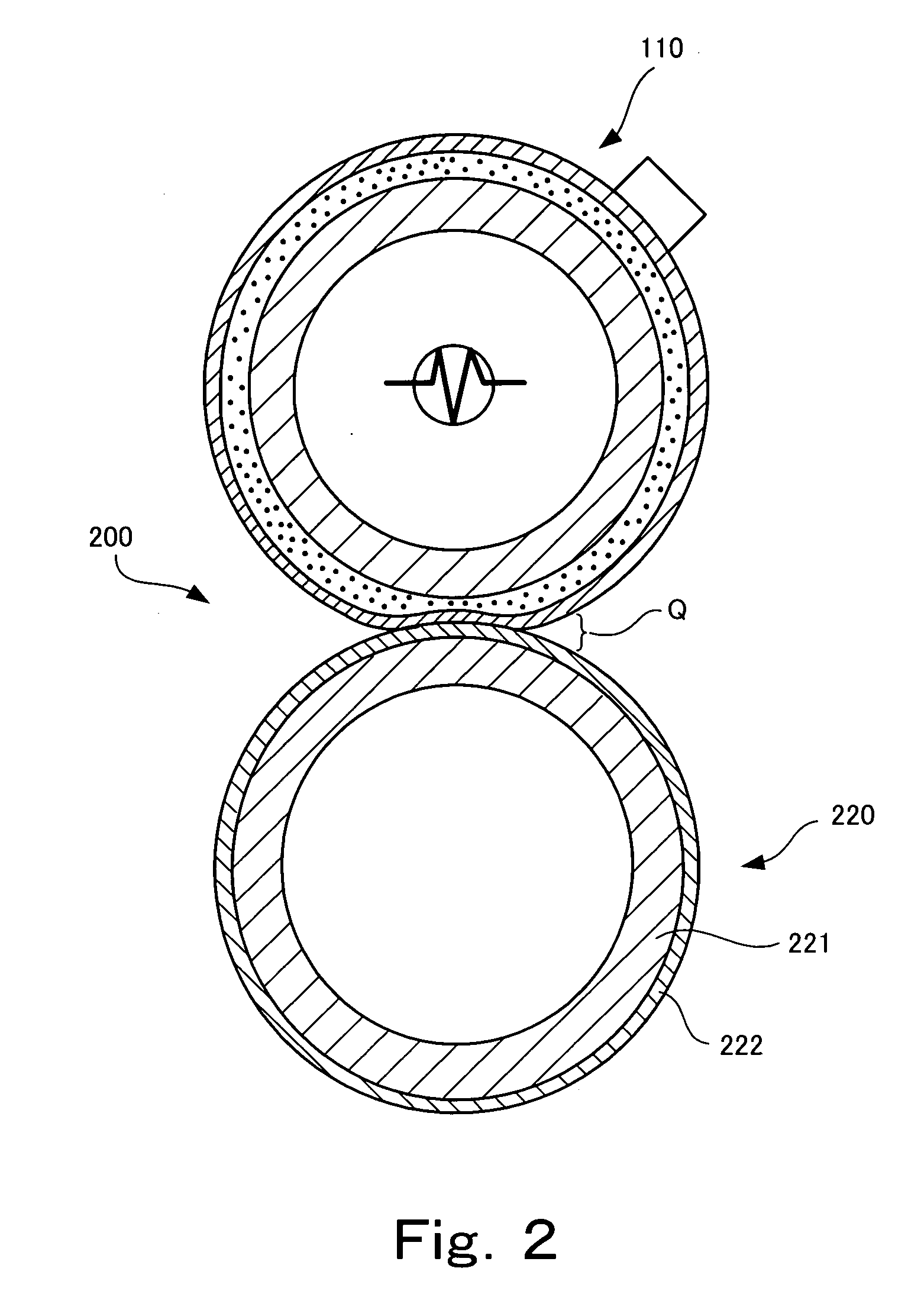Circulating body and fixing device
a fixing device and circulating body technology, applied in the direction of ohmic-resistance heating, shafts and bearings, instruments, etc., can solve the problems of odor and sanitation, inferior fixing characteristics of other fixing methods, solvent fixing methods and pressure fixing methods, etc., to prevent the unstable running of recording sheets, high reliability, and high reliability of fixing devices
- Summary
- Abstract
- Description
- Claims
- Application Information
AI Technical Summary
Benefits of technology
Problems solved by technology
Method used
Image
Examples
example 1
[0080] In the first example, a fluororesin solution (manufactured by Mitsui•Du Pont Flurochemical) prepared by mixing a PFA powder having an average particle diameter of 8 μm and a low melt viscosity (0.3×104 to 0.5×104 Pa·s; 380° C.) with a PFA dispersion, prepared by dispersing a PFA fine particle having an average particle diameter of. 0.2 μm and a low melt viscosity (0.3×104 to 0.5×104 Pa·s; 380° C.) in an aqueous solvent, in the following ratio: PFA powder / PFA fine particle=15 / 85, is used as the material of the surface layer.
[0081] Also, as the filler particle, barium sulfate (BMH-60, manufactured by Sakai Chemical Industry Co., Ltd.: average particle diameter: 5 μm, and content of a large particle 15 μm or more in size is 2 mass % or less) is used and compounded in an amount of 10 mass parts based on 100 mass parts of PFA.
[0082] Here, the ratio of “PFA powder / PFA fine particle=15 / 85” means that the PFA powder is about 18 mass parts per 100 mass parts of the PFA fine particle...
example 2
[0085] In the second example, the same material in the first example is used except that zeolite (Toyobuilder (manufactured by Tosoh Corporation), average particle diameter: 2 μm) is used as the filler particle in place of barium sulfate in the first example in an amount of 5 mass parts in 100 mass parts of PFA.
[0086] Here, the proportion of “5 mass parts” of the filler particle is close to the lower limit of the aforementioned preferable proportion, namely, “the amount of the inorganic fine particle is 3 mass parts or more and 15 mass parts or less based on 100 mass parts of the fluororesin”.
[0087] The gloss of the surface layer in the second example is 36 as the value measured by a 75° micro-gloss meter (BYK Gardner). Also, the surface roughness Ra of the surface layer is 0.9 μm and the filtered wave center waviness of the surface layer is 0.58 μm in the condition of a cutoff of 0.25 mm. Further, the static friction coefficient of the surface layer with a common paper at 100° C....
example 3
[0088] In the third example, the same material in the first example is used except that as the filler particle, a mixture of barium sulfate (BMH-60, manufactured by Sakai Chemical Industry Co., Ltd., average particle diameter: 5 μm, large particles having a particle diameter of 15 μm or more is 2 mass % or less) and mica (Iriodin(R) 111 manufactured by Japan Merk Co., Ltd.) is used, and barium sulfate and mica are compounded in an amount of 5 mass parts and in an amount of 3 mass parts respectively based on 100 mass parts of PFA. Namely, in this example, the mixture of plural types of filler materials is used.
[0089] The gloss of the surface layer in the third example is 39 as the value measured by a 75° micro-gloss meter (BYK Gardner). Also, the surface roughness Ra of the surface layer is 1.0 μm and the filtered wave center waviness of the surface layer is 0.45 μm in the condition of a cutoff of 0.25 mm. Further, the static friction coefficient of the surface layer with a common p...
PUM
 Login to View More
Login to View More Abstract
Description
Claims
Application Information
 Login to View More
Login to View More - R&D
- Intellectual Property
- Life Sciences
- Materials
- Tech Scout
- Unparalleled Data Quality
- Higher Quality Content
- 60% Fewer Hallucinations
Browse by: Latest US Patents, China's latest patents, Technical Efficacy Thesaurus, Application Domain, Technology Topic, Popular Technical Reports.
© 2025 PatSnap. All rights reserved.Legal|Privacy policy|Modern Slavery Act Transparency Statement|Sitemap|About US| Contact US: help@patsnap.com



